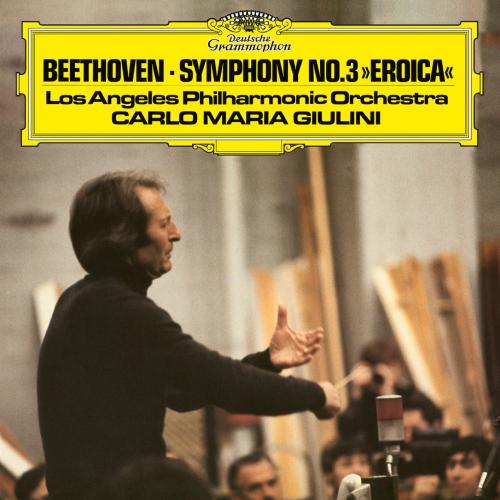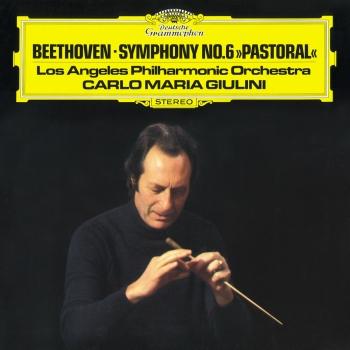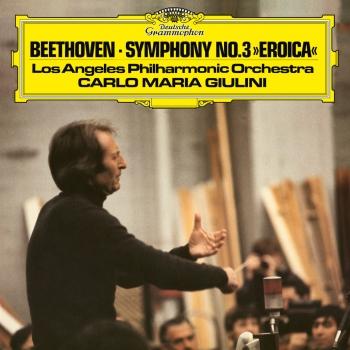
Beethoven: Symphony No. 3 in E Flat, Op. 55 (Remastered) Los Angeles Philharmonic Orchestra & Carlo Maria Giulini
Album Info
Album Veröffentlichung:
2019
HRA-Veröffentlichung:
22.03.2019
Label: Deutsche Grammophon
Genre: Classical
Subgenre: Orchestral
Interpret: Los Angeles Philharmonic Orchestra & Carlo Maria Giulini
Komponist: Ludwig van Beethoven (1770–1827), Robert Schumann (1810-1856)
Das Album enthält Albumcover
Entschuldigen Sie bitte!
Sehr geehrter HIGHRESAUDIO Besucher,
leider kann das Album zurzeit aufgrund von Länder- und Lizenzbeschränkungen nicht gekauft werden oder uns liegt der offizielle Veröffentlichungstermin für Ihr Land noch nicht vor. Wir aktualisieren unsere Veröffentlichungstermine ein- bis zweimal die Woche. Bitte schauen Sie ab und zu mal wieder rein.
Wir empfehlen Ihnen das Album auf Ihre Merkliste zu setzen.
Wir bedanken uns für Ihr Verständnis und Ihre Geduld.
Ihr, HIGHRESAUDIO
- Ludwig van Beethoven (1770 - 1827):
- 1 1. Allegro con brio 20:33
- 2 2. Marcia funebre. Adagio assai 17:23
- 3 3. Scherzo. Allegro vivace 06:33
- 4 4. Finale. Allegro molto 13:03
Info zu Beethoven: Symphony No. 3 in E Flat, Op. 55 (Remastered)
Carlo Maria Giulini (1914-2005) was music director of the Los Angeles Philharmonic from 1978-1984, beginning upon the departure of Zubin Mehta (mus. dir. 1962-1978) to be the New York Philharmonic's music director. This recording of the Beethoven "Eroica" Symphony was Giulini's very first Los Angeles Philharmonic recording (November, 1978) and was released shortly after on LP.
The Beethoven Third is too famous to be introduced. The Eroica was a revolution in the world of Symphony comparable to the Rite of Spring in contemporary music. Beethoven puts it all in a new language, nevertheless keeping the structure of the classical Symphony with four movements.
Many readings are famous. However, it is difficult to find the definitive Eroica. Klemperer and Monteux offered two remarkable readings in mono version. In the forthcoming days Dudamel will give his own. Giulini, with the same LA Philarmonic now conducted by Dudamel gave an impressive reading.
His main innovation was the tempo in the first movement. Though it keeps the Allegro con Brio approach, it does not go that fast like other versions. An this perspective gains value with musicology and research about the Symphony. The Chailly recently issued version shows that Giulini reading has strenght and support instead of a maniac first movement. Here in the first movement Giulini gathers the many ideas Beethoven tried to condense in this long movement. As a matter of fact, the Eroica lasted more than any symphony ever written before.
Appart from that peculiar reading of the first movement, the symphony keeps its strenght, correct playing and expression all the time. The second movement perhaps has less pathos than in other readings. However, the Giulini reading gives a solid account and, through the elegant style and serenity of the battoom, you may seem to see and feel all the whole view and perspective of the Eroica. The epic and tension are there, together with the themes of faith, struggle, victory, redention and some kind of supernatural joy.
Los Angeles Philharmonic Orchestra
Carlo Maria Giulini, conductor
Digitally remastered
Keine Biografie vorhanden.
Dieses Album enthält kein Booklet
















